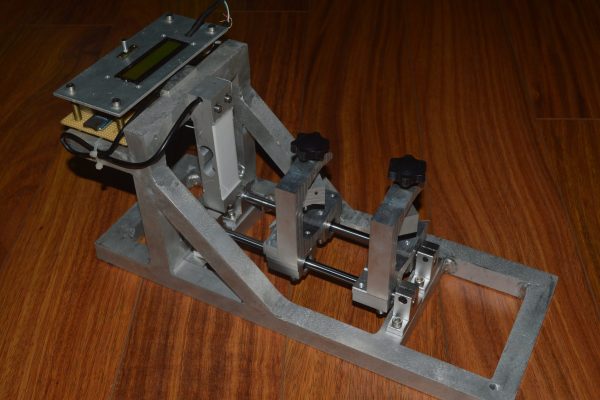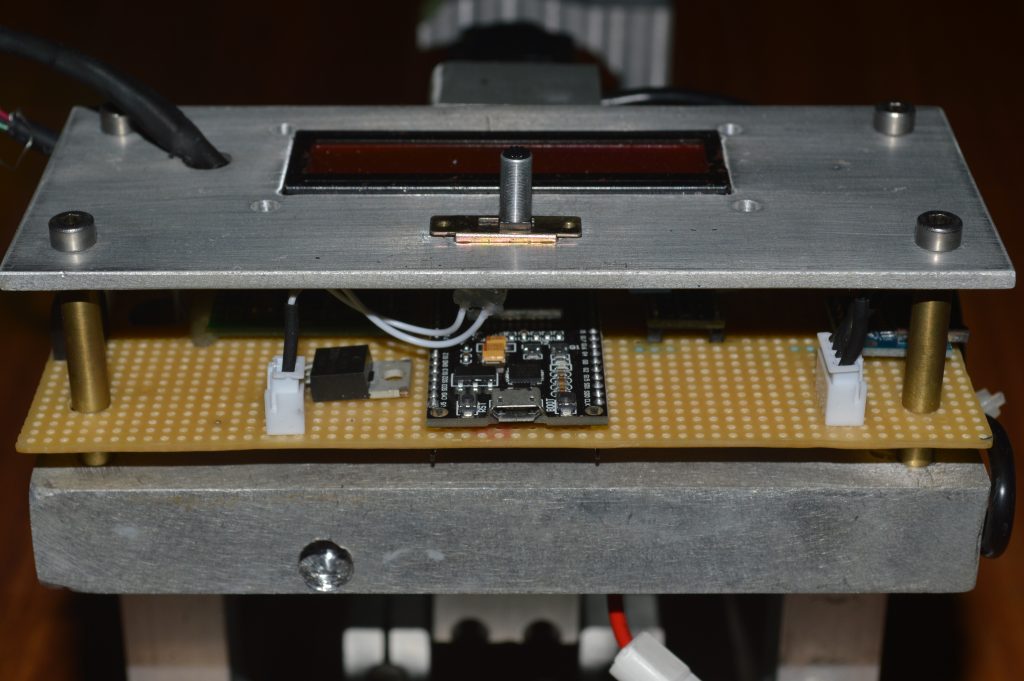Test Stand
To have data about the performance of rocket motors a test stand was developed. The test stand allows us to measure and record the force exerted by the motor during propellant burn.
On this page I talk about the stand structure, the hardware used and the software developed for the stand controller and for processing the data obtained.
Test stand structure
The test stand is made of aluminum. The structure is essentially composed of:
- Two claws for fixing the rocket, which are on two linear guides;
- A vertical wall for fixing the load cell;
- Additional components for the calibration;
- Rear supports for the electronics and the battery;
Some pieces were made with the help of a lathe and a cnc.
Eletronics and Firmware
An Esp32 microcontroller is used to collect the data coming from the load cell. With wifi connectivity, the test stand communicates with a central server. It sends the test data and receives commands. A web interface made by us provides control and data visualization of the burn process. The microcontroller will store on a microSD card a .txt file with all the data collected from the load cell (raw data) and the corresponding time instants (in mS) for each of the samples if communication fails.
Data processing software
A program written in python is used to process the data collected by the microcontroller. This program creates an excel sheet that contains the data originated from the stand readings.
The resulting spreadsheet contains a table that shows us the applied force at various times during the firing.
Thus, I can finally evaluate the result of an engine firing.

